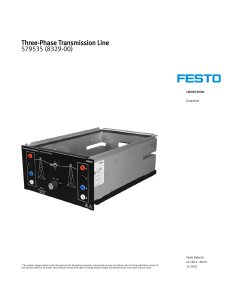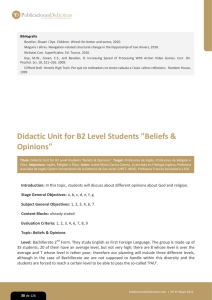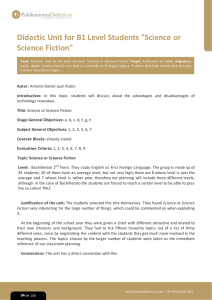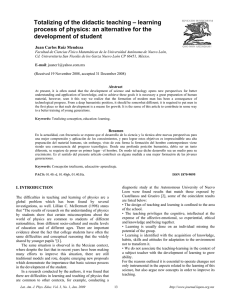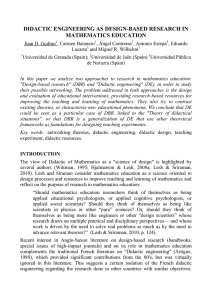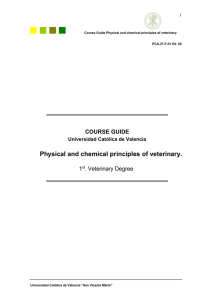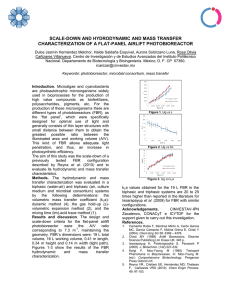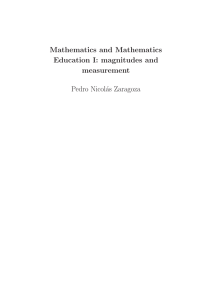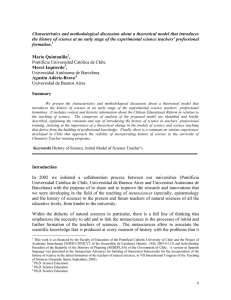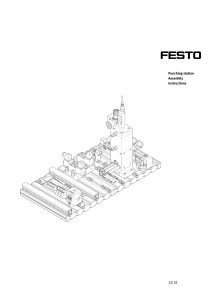volumetric oxygen transfer coefficient`s comparison between didactic
Anuncio
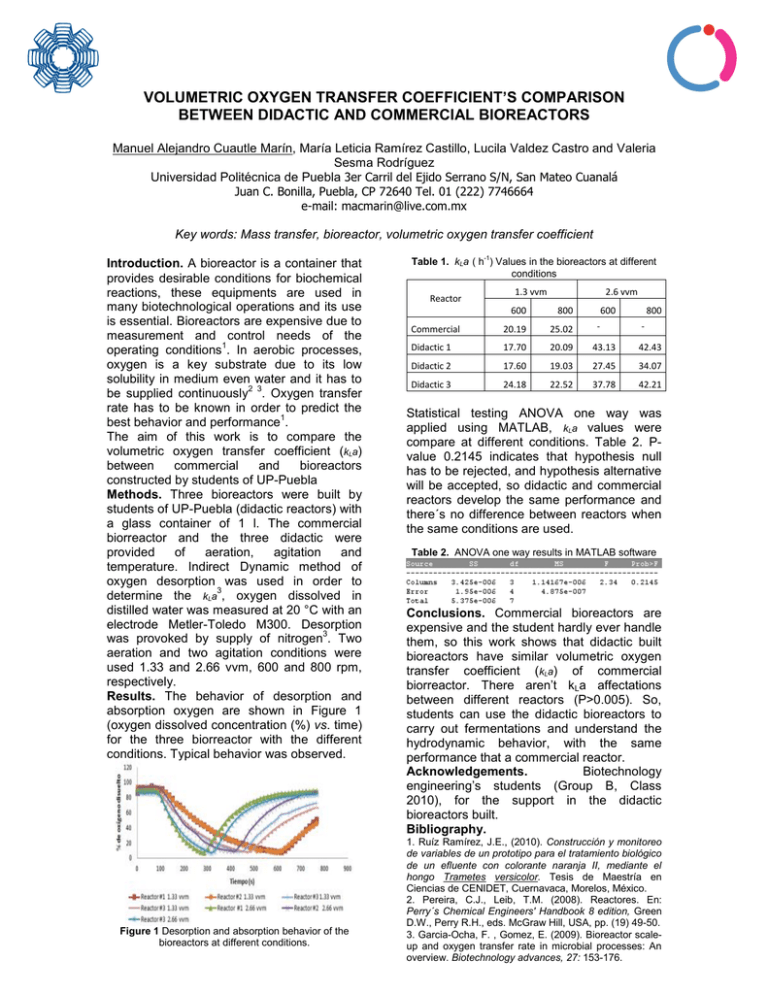
VOLUMETRIC OXYGEN TRANSFER COEFFICIENT’S COMPARISON BETWEEN DIDACTIC AND COMMERCIAL BIOREACTORS Manuel Alejandro Cuautle Marín, María Leticia Ramírez Castillo, Lucila Valdez Castro and Valeria Sesma Rodríguez Universidad Politécnica de Puebla 3er Carril del Ejido Serrano S/N, San Mateo Cuanalá Juan C. Bonilla, Puebla, CP 72640 Tel. 01 (222) 7746664 e-mail: [email protected] Key words: Mass transfer, bioreactor, volumetric oxygen transfer coefficient Introduction. A bioreactor is a container that provides desirable conditions for biochemical reactions, these equipments are used in many biotechnological operations and its use is essential. Bioreactors are expensive due to measurement and control needs of the 1 operating conditions . In aerobic processes, oxygen is a key substrate due to its low solubility in medium even water and it has to 2 3 be supplied continuously . Oxygen transfer rate has to be known in order to predict the 1 best behavior and performance . The aim of this work is to compare the volumetric oxygen transfer coefficient (kLa) between commercial and bioreactors constructed by students of UP-Puebla Methods. Three bioreactors were built by students of UP-Puebla (didactic reactors) with a glass container of 1 l. The commercial biorreactor and the three didactic were provided of aeration, agitation and temperature. Indirect Dynamic method of oxygen desorption was used in order to 3 determine the kLa , oxygen dissolved in distilled water was measured at 20 °C with an electrode Metler-Toledo M300. Desorption 3 was provoked by supply of nitrogen . Two aeration and two agitation conditions were used 1.33 and 2.66 vvm, 600 and 800 rpm, respectively. Results. The behavior of desorption and absorption oxygen are shown in Figure 1 (oxygen dissolved concentration (%) vs. time) for the three biorreactor with the different conditions. Typical behavior was observed. Figure 1 Desorption and absorption behavior of the bioreactors at different conditions. Table 1. kLa ( h-1) Values in the bioreactors at different conditions Reactor 1.3 vvm 600 2.6 vvm 800 600 - 800 - Commercial 20.19 25.02 Didactic 1 17.70 20.09 43.13 42.43 Didactic 2 17.60 19.03 27.45 34.07 Didactic 3 24.18 22.52 37.78 42.21 Statistical testing ANOVA one way was applied using MATLAB, kLa values were compare at different conditions. Table 2. Pvalue 0.2145 indicates that hypothesis null has to be rejected, and hypothesis alternative will be accepted, so didactic and commercial reactors develop the same performance and there´s no difference between reactors when the same conditions are used. Table 2. ANOVA one way results in MATLAB software Conclusions. Commercial bioreactors are expensive and the student hardly ever handle them, so this work shows that didactic built bioreactors have similar volumetric oxygen transfer coefficient (kLa) of commercial biorreactor. There aren’t kLa affectations between different reactors (P>0.005). So, students can use the didactic bioreactors to carry out fermentations and understand the hydrodynamic behavior, with the same performance that a commercial reactor. Acknowledgements. Biotechnology engineering’s students (Group B, Class 2010), for the support in the didactic bioreactors built. Bibliography. 1. Ruíz Ramírez, J.E., (2010). Construcción y monitoreo de variables de un prototipo para el tratamiento biológico de un efluente con colorante naranja II, mediante el hongo Trametes versicolor. Tesis de Maestría en Ciencias de CENIDET, Cuernavaca, Morelos, México. 2. Pereira, C.J., Leib, T.M. (2008). Reactores. En: Perry´s Chemical Engineers' Handbook 8 edition, Green D.W., Perry R.H., eds. McGraw Hill, USA, pp. (19) 49-50. 3. Garcia-Ocha, F. , Gomez, E. (2009). Bioreactor scaleup and oxygen transfer rate in microbial processes: An overview. Biotechnology advances, 27: 153-176.
